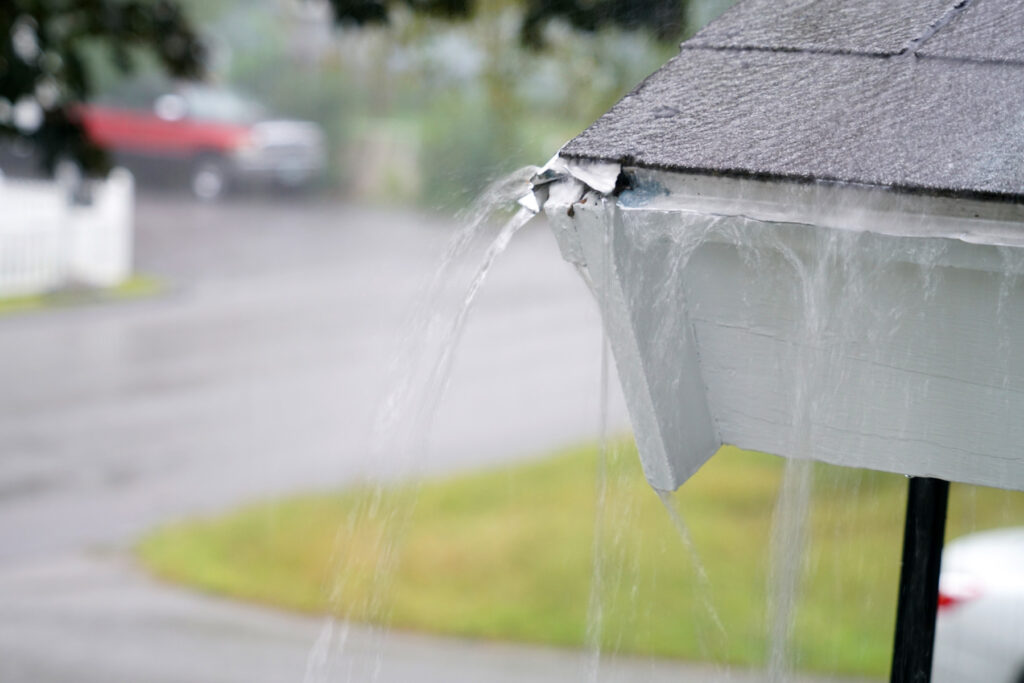
As winter approaches, taking the necessary steps to prepare your roof is not just preventive maintenance; it’s an investment in your home’s longevity. Roofs face the brunt of severe weather, with potential problems like ice dams, heavy snow, and harsh winds putting your home at risk. By understanding and implementing these seven easy steps, you’ll not only save on potential repair costs but also enhance your home’s overall safety and energy efficiency. Here are 7 roof maintenance tips for all seasons.
1. Thoroughly Inspect Your Roof
A thorough inspection of your roof is the first step in preparing for winter. This involves not just a visual check but a detailed assessment using tools like binoculars for hard-to-reach areas. Look for specific signs such as curling shingles, which indicate weathering, and granule loss, visible as small particles in gutters. Access hard-to-reach areas safely using a stable ladder, and consider using a roof inspection software tool for a more comprehensive check. If any damage is found, it is advisable to contact a professional roofer immediately.
2. Clean and Clear Your Gutters
Gutters must be free of debris to function effectively in winter. A clogged gutter can lead to ice dams, which can cause water damage to the roof and interior of your home. Use a sturdy ladder to inspect gutters for blockages, leaks, or corrosion. Here’s a basic checklist:
- Check for debris buildup and remove it.
- Look for gutter sagging or detachment.
- Inspect for rust spots or holes indicating corrosion.
- Ensure downspouts are not blocked.
For a detailed tutorial on gutter maintenance, check out our gutter blogs and tips. Regular maintenance in the fall, such as twice a month, can help keep them clear.

3. Trim Back Overhanging Branches
Overhanging branches can break off in heavy snow or ice, causing damage to your roof. For safe tree trimming, use tools like pole pruners or consider hiring an arborist for taller trees. Here’s a simple guide to safe trimming:
- Assess the height and reach of branches first.
- Use safety goggles and stable equipment.
- If branches are near power lines, call a professional service.
Removing these branches will help prevent potential roof damage and extend the lifespan of your shingles.
4. Check Attic Ventilation
Proper attic ventilation is key in preventing condensation and ice dams. It involves ensuring air can flow freely in and out of the attic, reducing moisture buildup. Types of vents include ridge vents, soffit vents, and gable vents, each with specific installation needs. Check for blockages in existing vents and consider adding more if your attic feels humid. A well-ventilated attic not only protects your roof but also improves energy efficiency in your home.
5. Install Additional Insulation
Installing extra insulation in your attic keeps your home warm and reduces energy expenditures. Consider materials such as spray foam, fiberglass, or cellulose for their insulating properties. Not only do these options offer thermal resistance, but they also have environmental benefits by increasing energy efficiency and lowering heating bills. For a sustainable option, look for insulation with an ENERGY STAR label.
6. Repair Flashing and Caulking
Flashing are thin metal strips installed to prevent water seepage. Check around chimneys, skylights, and vents for loose or damaged sections. Here’s a material checklist for quick patches:
- Waterproof roofing cement.
- Rubberized roofing compound.
- Metal flashing patches or rolls.
A case from Minnesota had a homeowner who neglected loose flashing and faced $10,000 in repairs after multiple leaks. Addressing these issues early can prevent costly water damage.
7. Plan for Regular Snow Removal
Snow accumulation can stress your roof, leading to collapse in extreme cases. Using a roof rake is an effective method to clear snow without climbing onto the roof. For safety:
- Choose a rake with a long, adjustable handle.
- Engage eco-friendly de-icing agents to reduce ice buildup.
Never attempt to remove heavy ice as it can dislodge shingles or flashing. Professionals can safely remove snow buildup if needed. Consider giving us a call for future problems.
Future Considerations and Forecasts
The future of roofing lies in resilience to extreme weather. Anticipate technological advancements such as solar tiles, which integrate energy production into your roof without sacrificing durability. These can withstand heavy snow and lower energy costs, offering a robust solution for winter preparedness. With changing climate patterns, staying informed of new materials and techniques will prepare homeowners for whatever winter throws at them.
Post-Winter Maintenance Tips
Once winter is over, begin transitioning your maintenance routine to prepare for spring. Inspect your roof for any winter-induced damage like loose shingles or moss growth. A seasonal maintenance schedule ensures your roof remains in peak condition throughout the year. For example, inspect insulation and ventilation in summer and check for debris in fall.
FAQs About Winter Roof Care
- How often should roof inspections occur during winter? Major inspections before winter and after severe storms are crucial.
- What are ice dams, and how can they affect my roof? Ice dams block melting snow from draining, potentially causing leaks. Prevent them by keeping your roof cold with proper ventilation and insulation.
- Is there a cost-effective method to manage roof maintenance? Regular inspections and minor repairs prevent expensive fixes, and professional maintenance resources are a sound investment.
- What if I ignore roof maintenance? Ignoring maintenance can lead to severe structural issues, costly repairs, and decreased home value.
For more expert advice on roof care and maintenance, visit the National Roofing Contractors Association, which offers a wealth of resources


